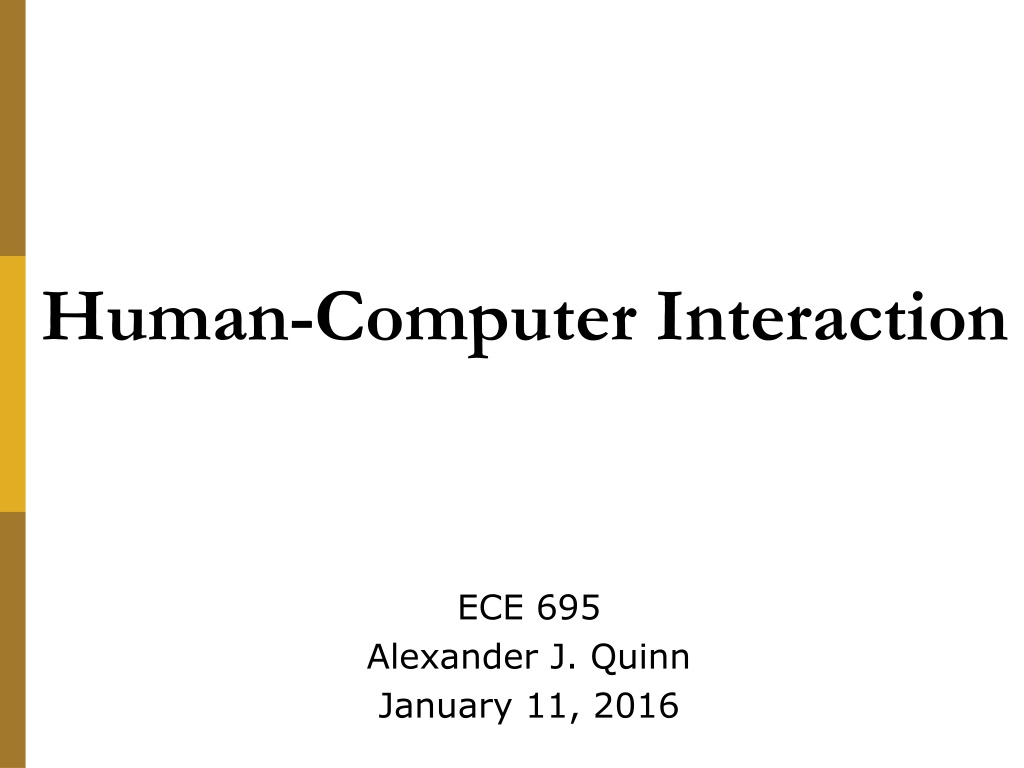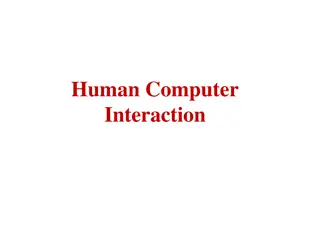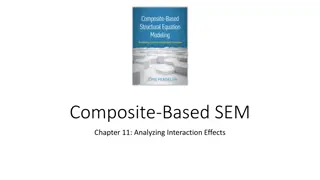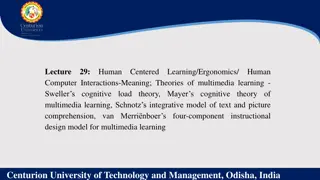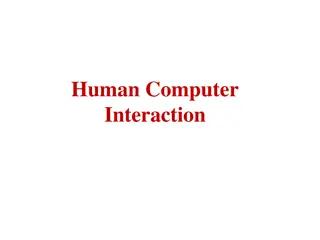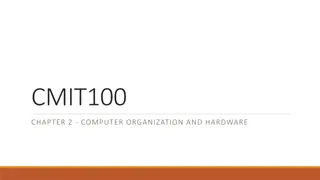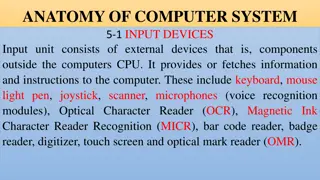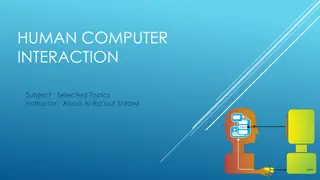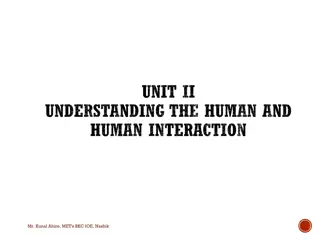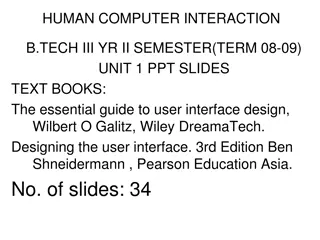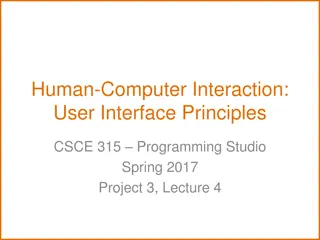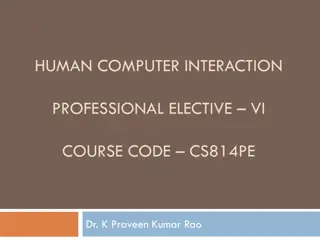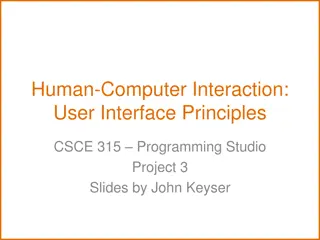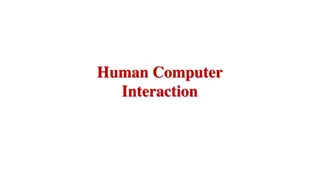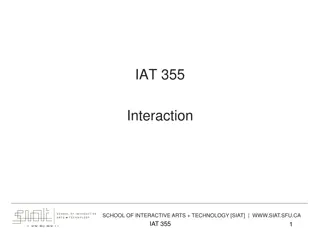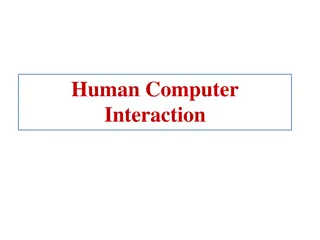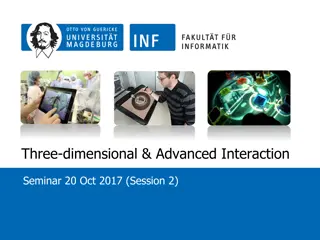Human-Computer Interaction
In the realm of ECE 695, delve into the intricate dynamics of human-computer interaction as presented by Alexander J. Quinn on January 11, 2016. Explore the fundamental concepts, theories, and applications that govern this fascinating field, shaping the future of technology and user experience.
Download Presentation

Please find below an Image/Link to download the presentation.
The content on the website is provided AS IS for your information and personal use only. It may not be sold, licensed, or shared on other websites without obtaining consent from the author.If you encounter any issues during the download, it is possible that the publisher has removed the file from their server.
You are allowed to download the files provided on this website for personal or commercial use, subject to the condition that they are used lawfully. All files are the property of their respective owners.
The content on the website is provided AS IS for your information and personal use only. It may not be sold, licensed, or shared on other websites without obtaining consent from the author.
E N D
Presentation Transcript
Human-Computer Interaction ECE 695 Alexander J. Quinn January 11, 2016
HCI at other US universities U of Washington DUB - Design-Use-Build HCDE - Human-Centered Design & Engineering Degrees: MHCI+D x 48 Carnegie Mellon HCII Human-Computer Interaction Institute Degrees: MHCI, PhD-HCI x >30 U of Illinois HCI Group Degrees: none x 5 MIT Media Lab (CSAIL: faculty labs) Degrees: MS, PhD x >30 UC Berkeley Berkeley Inst. of Design Jacobs Institute Degrees: none x 20 U of Maryland HCIL Human-Computer Interaction Lab Degrees: MS-HCI x 26 Georgia Tech School of Interactive Computing Degrees: MS-HCI and PhD-HCC x 54 Stanford Stanford HCI Group Degrees: none x 4
hci.ecn.purdue.edu Dual Xeon E5-2680v3 CPUs 24 cores / 48 threads @ 2.5 GHz 128 GB RAM DDR4 @ 2133 million transfers/second 8 TB storage Near-line storage, RAID6 w/ 4 x 2TB Dual power supplies 450W, hot-swappable http://www.storagereview.com/dell_poweredge_13g_r530_review
Performance requests per second uptime average response time peak response time network throughput mean time between failures
Performance Parameter Mean Range Eye movement time 230 ms 70-700 ms Decay half-life of visual image storage 200 ms 90-1000 ms Visual Capacity 17 letters 7-17 letters Decay half-life of auditory storage 1500 ms 90-3500 ms Auditory Capacity 5 letters 4.4-6.2 letters Perceptual processor cycle time 100 ms 50-200 ms Cognitive processor cycle time 70 ms 25-170 ms Motor processor cycle time 70 ms 30-100 ms Effective working memory capacity 7 chunks 5-9 chunks Pure working memory capacity 3 chunks 2.5-4.2 chunks Decay half-life of working memory 7 sec 5-226 sec Decay half-life of 1 chunk working memory 73 sec 73-226 sec Decay half-life of 3 chunks working memory 7 sec 5-34 sec
Human Information Processor (Card, Moran, Newell, 1986)
Gulf of execution EXECUTION BRIDGE ACTION SPECIFICATION GOALS INTERPRETATION PHYSICAL SYSTEM EVALUATION BRIDGE (Don Norman, 1986)
Direct manipulation Represent objects by physical appearance Effective conceptual model Represent actions by effects on screen Rapid feedback and reversability Engagement Feel that you are working on the data/task https://hcik4.wordpress.com/2008/11/01/direct-manipulation-cont/
Usability Learnability eFficiency Memorability Errors Satisfaction (Jakob Nielson, 1994)
Gestalt grouping principles http://blog.fusioncharts.com/2014/03/how-to-use-the-gestalt-principles-for-visual-storytelling-podv/
